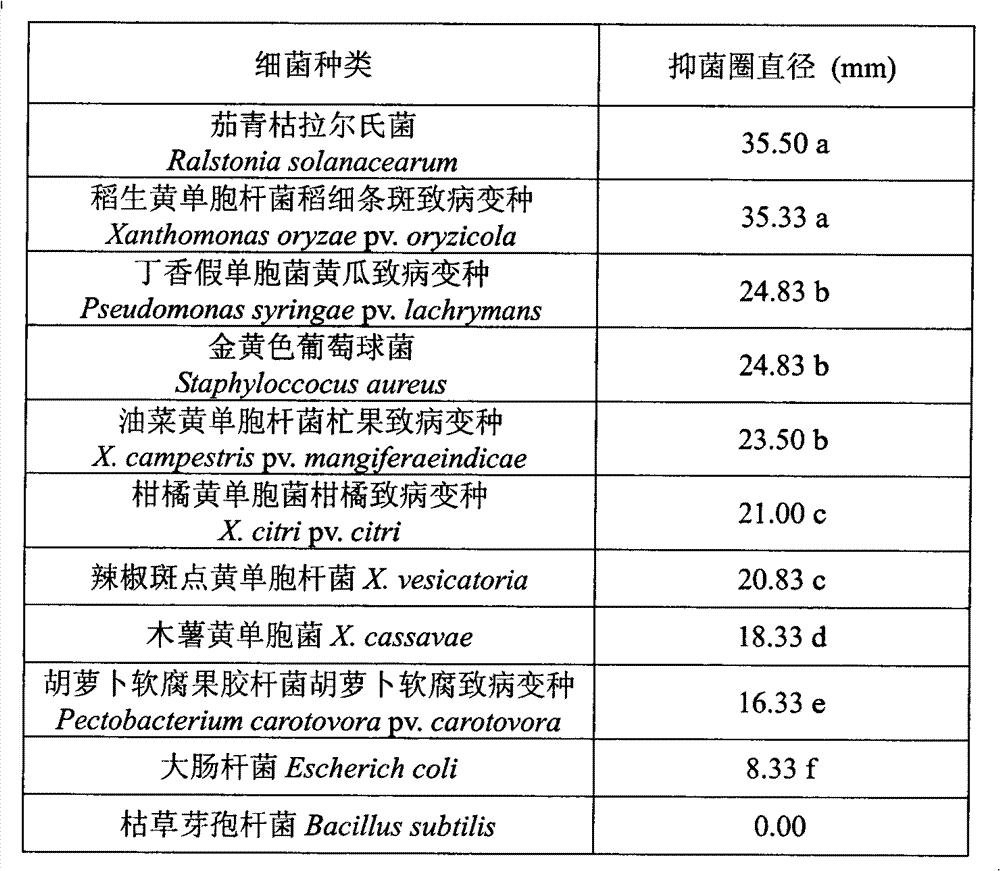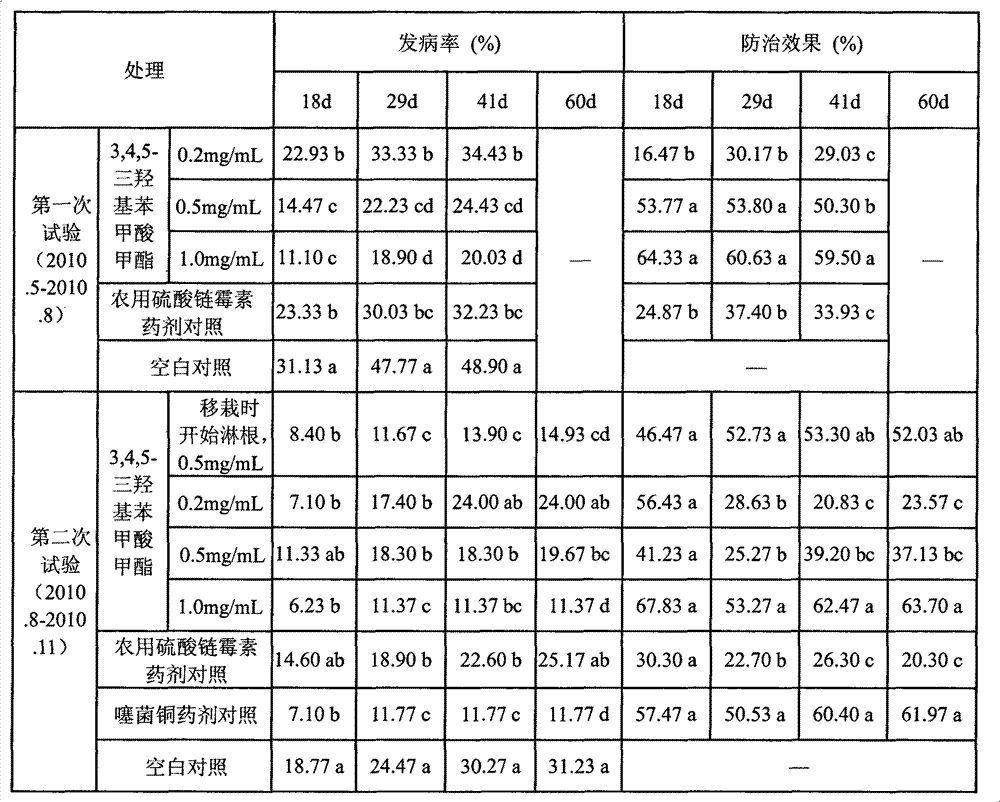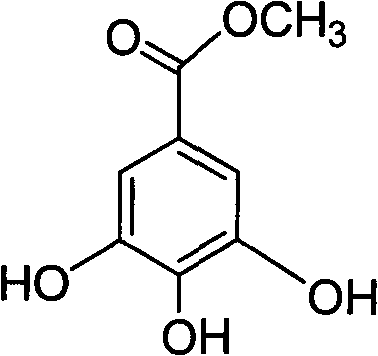Application method of plant-derived fungicide in plant disease prevention and control
A plant-derived fungicide, a technology for preventing and controlling plant diseases, applied in the directions of botanical equipment and methods, fungicides, plant growth regulators, etc., to achieve the effects of strong bacteriostatic effect, simple production process and low production cost
- Summary
- Abstract
- Description
- Claims
- Application Information
AI Technical Summary
Problems solved by technology
Method used
Image
Examples
Embodiment 1
[0014] Embodiment 1: the extraction of the antibacterial substance of wax tree leaf
[0015] Dry the collected leaves of the wax tree in the shade, then dry them at 50°C for 24-48 hours, crush them with a 40-mesh sieve grinder, and reflux them with methanol for 3 times, each time for 3 hours. The combined extracts were concentrated under reduced pressure in a water bath at 50°C with a rotary evaporator to obtain methanol extracts from the leaves of Sarcophagus spp., and the filtered plant residues were dried in the sun for later use. The methanol extract was extracted with ether, and the extract was concentrated to obtain an ether extract.
Embodiment 2
[0016] Example 2: Separation and purification of 3,4,5-trihydroxybenzoic acid methyl ester in the ether extract of the leaves of the wax tree
[0017] The ether extract of the leaves of the wax tree was mixed with reagent-type silica gel (100-200 mesh), and the silica gel (100-200 mesh) column chromatography was used to mix the sample with petroleum ether (60-90 ° C) / acetone (5:1 and 1:1). 1) For gradient elution of the eluent, combine the components of petroleum ether / acetone (1:1), mix the sample with silica gel (100-200 mesh), use silica gel (100-200 mesh) column chromatography, and use chloroform / methanol (10:1) was used as the eluent for elution, and the obtained components were mixed with silica gel (100-200 mesh), and silica gel (200-300 mesh) column chromatography was used, and chloroform / methanol (20:1 ) as the eluent, and finally the obtained components were mixed with silica gel (200-300 mesh), and silica gel (200-300 mesh) was used for column chromatography, and p...
Embodiment 3
[0018] Example 3: Toxicity of methyl 3,4,5-trihydroxybenzoate to Larsia solanacearum
[0019] The tested bacterial species, Ralstonia solanacearum, was provided by the Plant Pathology Research Office of Guangxi University, which belonged to race 1 biochemical type III, and was stored in sterilized water at 20°C. The test bacteria were first streaked and activated on NA solid medium (Nutrient agar, formula: yeast powder 3g, peptone 5g, glucose 10g, agar 17g, water 1000mL, pH 7.0-7.2) for 24-48h, and then transferred to NA culture Suspension culture (28°C, 120rpm) in liquid for 24h. The toxicity of methyl 3,4,5-trihydroxybenzoate to Larsia solanacearum was determined by plate dilution method. Dissolve methyl 3,4,5-trihydroxybenzoate with 10% dimethyl sulfoxide, add different concentrations of drug solution into NA medium, and prepare a series of drug-containing liquid plates. Dilute the bacterial suspension to 10 3 CFU / mL, take 100 μL and smear it on the plate, take the plate...
PUM
 Login to View More
Login to View More Abstract
Description
Claims
Application Information
 Login to View More
Login to View More - R&D
- Intellectual Property
- Life Sciences
- Materials
- Tech Scout
- Unparalleled Data Quality
- Higher Quality Content
- 60% Fewer Hallucinations
Browse by: Latest US Patents, China's latest patents, Technical Efficacy Thesaurus, Application Domain, Technology Topic, Popular Technical Reports.
© 2025 PatSnap. All rights reserved.Legal|Privacy policy|Modern Slavery Act Transparency Statement|Sitemap|About US| Contact US: help@patsnap.com



